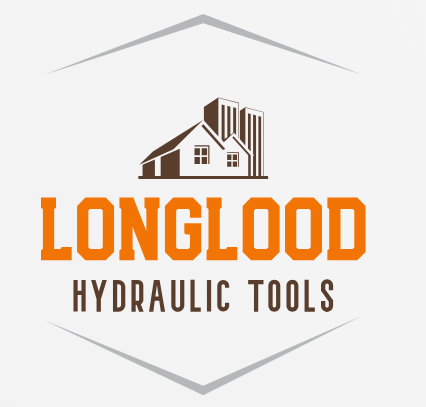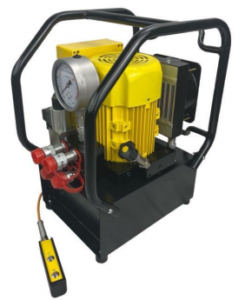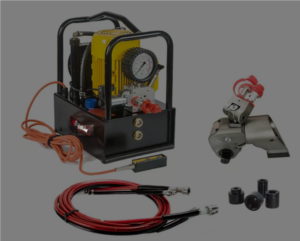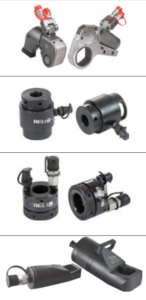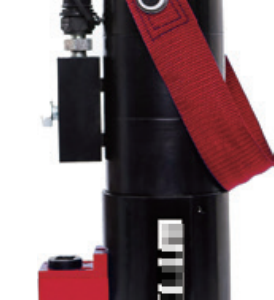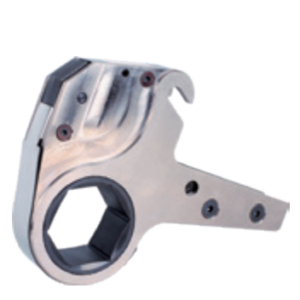1.0 IMPORTANT RECEIVING INSTRUCTIONS
Carefully inspect all components for shipping damage upon receipt. Damage caused during shipping is not covered under warranty. If any damage is identified, immediately notify the carrier. The carrier is responsible for covering all costs of repair and replacement resulting from shipping damage.
2.0 SAFETY
2.1 General Hydraulic Safety Precautions
Before operating hydraulic systems, thoroughly read and understand all instructions, warnings, and safety precautions. This helps to avoid personal injury or property damage. The manufacturer is not liable for damage or injury resulting from unsafe use, improper maintenance, or incorrect operation. If unsure about safety measures or system operation, contact the manufacturer for assistance or attend a free hydraulic safety course.
Failure to follow the below precautions may result in equipment damage or personal injury:
- 2.1.1 Wear appropriate personal protective equipment (e.g., gloves, safety goggles, boots) when operating hydraulic systems.
- 2.1.2 Do not set the pump’s relief valve higher than its maximum rated pressure. This can cause equipment failure or personal injury.
- 2.1.3 Ensure the system’s operating pressure does not exceed the pressure rating of its lowest-rated component. Overpressure may reduce pump life.
- 2.1.4 Avoid sharp bends or kinks in hydraulic hoses, as these can cause severe back pressure and hose failure.
- 2.1.5 Protect hoses from impacts. Sharp impacts can damage internal wire strands, increasing the risk of rupture under pressure.
- 2.1.6 Use handles or other safe methods for transporting hydraulic equipment. Never lift it by hoses or swivel couplers.
- 2.1.7 Keep hydraulic equipment away from excessive heat or flames to prevent leaks, seal damage, and material weakening.
- 2.1.8 Avoid handling pressurized hoses, as escaping oil can penetrate the skin, causing serious injuries. If this occurs, seek immediate medical attention.
- 2.1.9 Repairs or servicing must only be performed by qualified hydraulic technicians.
- 2.1.10 Replace worn or damaged parts with original manufacturer parts to maintain performance and safety.
- 2.1.11 Electric pumps must not be used in explosive atmospheres. Ensure installation adheres to all relevant electrical codes.
- 2.1.12 Avoid contact with moving parts and pressurized hoses.
- 2.1.13 Internal relief valves are factory-adjusted and must not be tampered with.
- 2.1.14 Verify motor specifications to avoid damage due to incorrect power sources.
2.2 Safety Precautions for BHC Series Electric Pumps
Follow these additional precautions specific to the BHC series electric pumps:
- 2.2.1 Always wear protective gloves, boots, and eye protection.
- 2.2.2 Avoid contact with high-pressure oil leaks, which can penetrate the skin and cause severe injuries. Seek immediate medical help if this occurs.
- 2.2.3 Never disconnect hydraulic couplers while under pressure.
- 2.2.4 Do not attempt repairs on a pressurized system. Ensure the pressure gauge reads “0” before servicing.
- 2.2.5 Avoid pressurizing a disconnected male coupler to prevent potential failure.
- 2.2.6 Monitor the pressure gauge during pressurization and be prepared to stop immediately if needed.
- 2.2.7 Ensure all quick-disconnect couplings are securely attached before operation.
- 2.2.8 Only trained personnel should operate the pump.
- 2.2.9 Never leave the pump pressurized and unattended. Depressurize the system before leaving.
- 2.2.10 Do not exceed the maximum working pressure of the hydraulic system components.
- 2.2.11 The HE series electric pumps are rated for a maximum working pressure of 700 பட்டை (10,000 psi). Never exceed this limit.
3.0 SPECIFICATIONS
3.1 Flow and Pressure Characteristics of BHE Series Electric Hydraulic Wrench Pumps
Note: Flow, pressure, and current draw may vary depending on factors such as power supply, pump condition, and application.
3.2 Technical Data
| மாதிரி | Max Pressure (பட்டை) | Flow at 0 பட்டை (எல்/நிமி) | Flow at Rated Pressure (எல்/நிமி) | Power Supply | Noise (dB) | எண்ணெய் கொள்ளளவு (எல்) | Weight Without Oil (kg) |
|---|---|---|---|---|---|---|---|
| BHC4TW | 700 | 7.0 | 0.6 | 220VAC | 75 | 5.0 | 27.0 |
Note: The pump operates efficiently between 20°C–40°C. For extreme temperatures, adjust hydraulic oil viscosity to maintain optimal performance.
4.0 INSTALLATION
4.1 Refueling Vent
- The refueling vent is non-sealed, and slight oil leakage during transport is normal. Drain hydraulic oil before shipping and refill before operation.
4.2 Oil Level
- Before starting the pump, ensure the oil level exceeds 2/3 of the upper oil level mark. Add hydraulic oil (ISO VG 32# recommended) if the level is below the lower mark.
4.3 Electrical Connections
- Electrical connections, including the power cable and handle cable, are pre-configured.
- Line circuit protection (115% of motor full load current) must be provided by the customer.
4.4 Hydraulic Connections
- Connect only matching male and female joints rated for 700 bar or higher. Ensure the pressure gauge reads “0” before connecting hoses.
5.0 OPERATION
5.1 Hydraulic Directional Valve
- Controls the flow to ports A or R.
- Port A: High-pressure hydraulic oil (max 700 பட்டை).
- Port R: Low-pressure hydraulic oil (max 100 பட்டை).
5.2 Handle Operation
- Power Button: Starts and stops the motor (hold type).
- Advance Button: Pressurizes Port A (non-hold type).
5.3 Relief Valve Adjustment
- Adjust pressure by loosening the jam nut and turning the relief valve handle clockwise. Ensure pressure does not exceed 700 பட்டை.
6.0 MAINTENANCE
Regularly inspect all system components for leaks or damage. Disconnect the pump from electrical power and relieve all hydraulic pressure before performing maintenance. Repairs to electrical components must be performed by qualified electricians adhering to local codes.
